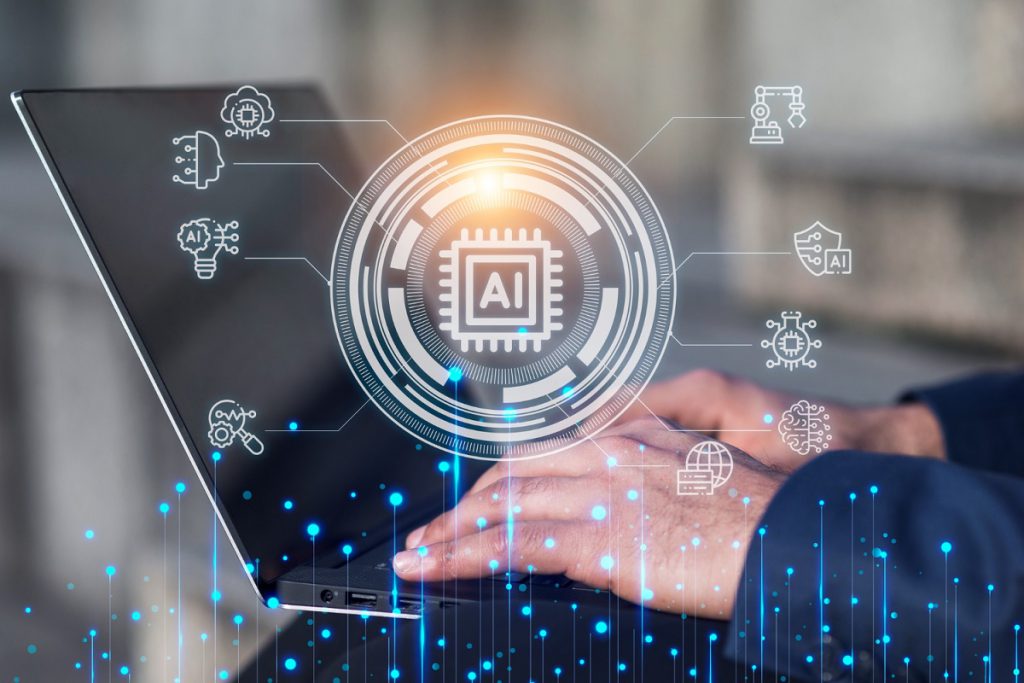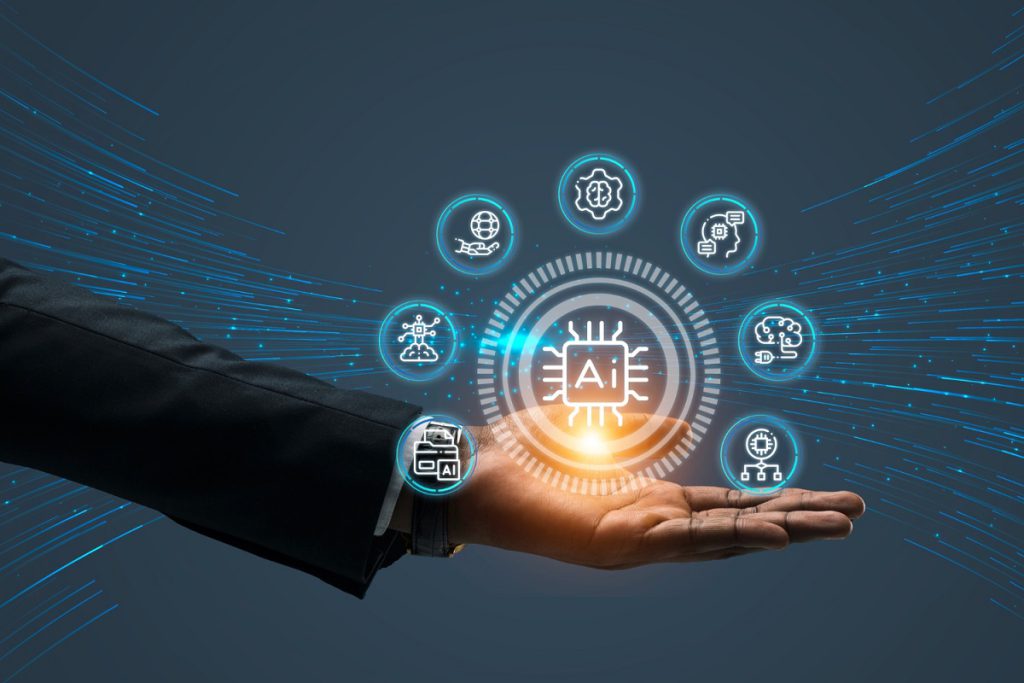Learn about how AI is changing the aerospace industry through uses like preventative maintenance, self-driving systems, and better navigation.
Cutting edge Technology like AI, cloud-based solutions, and machine learning brings innovation to the aerospace industry. With the help of AI in the aerospace sector, we can improve the design and structure of the aerospace vehicle and make it aerodynamic for less fuel consumption.
AI-enabled aerospace vehicles can capture vast amounts of data and help pilots and co-pilots make informed decisions at the right time to avoid accidents that might cause damage to the aircraft. In this blog, we will explore the top 10 uses of AI in the aerospace industry.
10 Uses of AI in Aerospace Industry
Get to know the different ways that AI is being used in aerospace to drive innovation, safety, and economy.

#1. Pilot Training with Computer Simulations and Virtual Reality
AI-powered computer simulations and virtual reality can be used for training pilots and copilots with immersive experiences.
It creates several states to improve the reflexes of the pilots and co pilots to ensure that they make right decision with the help of artificial intelligence to avoid any damage to aerospace vehicle.
The courseware of the aerospace training center is built using generative artificial intelligence, which saves lots of time, money, and effort.
#2. Building Aerodynamic Designs for Aerospace Vehicles
After conducting a thorough risk analysis and selecting the best materials to construct the vehicles’ essential components, aerospace engineers design the vehicles.
Aerospace vehicles that are designed aerodynamically offer negligible air resistance and allow the airs to pass in such a way to allow the airs to pass through vents. By making aerodynamic designs, we can improve the speed of aerospace vehicles.
Read: The Pros and Cons of Using AI in Aerospace industry
#3. Finding the Right Materials and Performing Calculations
There are many elements available on earth, but not all of them are good for building aerospace vehicles. The reason is because every element has physical properties. The study of the metals is conducted to determine the mechanical stress and strain.
Not only this, we also check their thermal resistance and conductivity to heat, light, and electricity. We ensure that materials used are durable, light and strong for building aerospace vehicles.
#4. Managing Flight Navigation Systems
The major problems of the aerospace industry are finding the safest and shortest route to a particular destination. With the help of AI, we can find the best route for aerospace vehicles that is fuel-efficient, cost-effective, and causes less traffic on air routes.
These air route schedulers are automated with the help of machine learning algorithms and AI models to optimize the air routes for aerospace exploration trips.
Read: How AI Consulting Company helps to grow your business
#5. AI Chat bots to Enhance User Experience in the Cockpit
We can enhance the user experience inside aerospace vehicles by using automated chat bots that are AI-driven.
They help us transfer knowledge about the different sections of aerospace vehicles and the study of stars and planets.
AI chatbots are efficient at answering frequently asked questions and assist us in solving problems through self-assessment tests to resolve minor technical issues in aerospace vehicles.
#6. Predictive Weather Analysis and Forecasting
Weather forecasting is essential for aerospace vehicles. The presence of clouds, wind, dust, and humidity in the air can help us determine the right path for aerospace vehicles.
With the proper implementation of predictive AI technology in aerospace vehicles, we can collect real-time data from the environment and analyze this data to make data-driven decisions for the safety of passengers and to avoid damage to aerospace vehicles.
Read: The Role of AI Consulting Services in Digital Transformation
#7. Passenger Safety and Preventing Damage
Risks to Passenger’s lives and aerospace damage are eliminated in the aerospace design phase by analyzing them through AI-enabled risk analyzers.
AI-enabled software can detect, identify, and mitigate risks with actionable tasks. By mitigating risks from aerospace vehicles, we can avoid flight accidents that ensure the longevity of the vehicles.
#8. Enhanced Security against Cyber Threats
Since artificial intelligence needs high-speed and reliable internet connectivity, there are lots of risks associated with online threats that need to be mitigated to avoid hacking incidents that can pose a threat to the nation since lots of money and resources are utilized in building aerospace vehicles.
To prevent security breaches and hacking of AI-enabled systems by cyber criminals or hackers, we can fortify AI infrastructure with AI-enabled cyber security that prevents unauthorized access.
Read: Understanding Challenges of AI Consulting in India
#9. Improving Fuel Efficiency
Aerospace vehicles are very expensive as they are made of inexpensive materials and precious semi-conductors. Since aerospace vehicles are very expensive, they need to be fuel-efficient.
With the use of adaptive AI technology, we can ensure power consumption is managed in an optimized way. Saving the power of the aerospace vehicle can help pilots, copilots, and astronauts in unfavorable circumstances when they need it.
#10. Optimized Maintenance through Predictive AI
The maintenance of the aerospace vehicle helps us maintain the health of the aircraft and ensures proper working during the flight.
With the help of predictive AI mechanisms, we can determine which components need replacement and which parts require maintenance and services to increase the lifespan of the vehicle.
Maintenance doesn’t mean replacing the whole unit of the cockpit; it means accurately determining where the problem exists and replacing that faulty component with a new one to make it work.
To sum up, we must say that there are many uses of AI in the aerospace sector. Firstly, it can be used for real-time training of pilots and copilots, preparing them for flight and adapting themselves to changing situations.
Read: Top 7 Development Tools Used by AI Developers
Secondly, we can build robust, secure, and highly efficient aerospace designs that increase fuel efficiency by reducing air resistance. With the use of AI in aerospace vehicles, we can automate workflows in the cockpit, making the pilot’s work easier, and manage power utilization to save energy in unfavorable circumstances.
The uses of artificial intelligence cannot be overstated. Before implementing AI in aerospace vehicles, we must analyze all risks properly and mitigate them with actionable tasks to avoid any mishaps.
AI-enabled aerospace vehicles are capable of recording the temperature, humidity, height from sea level, wind speed, and wind directions to predict the weather conditions of a location.
Read More:




